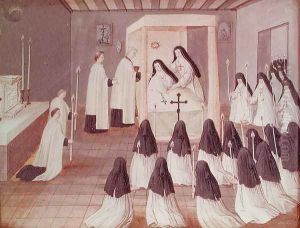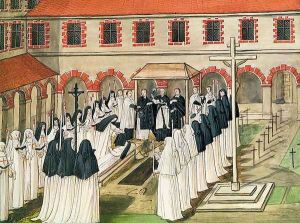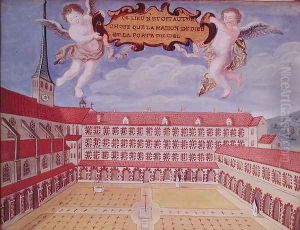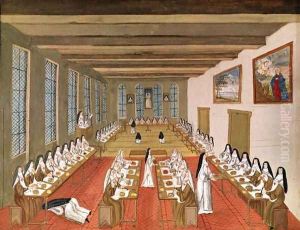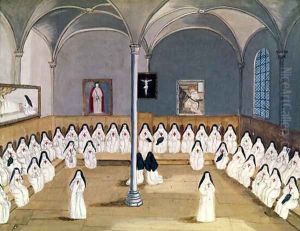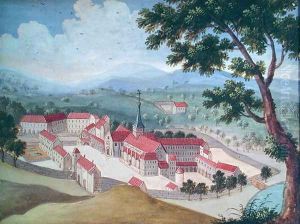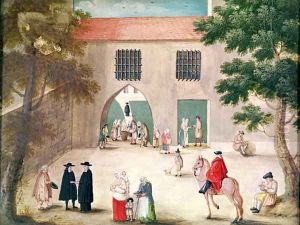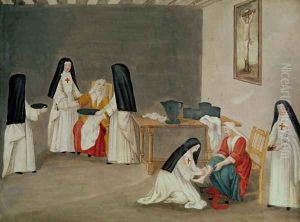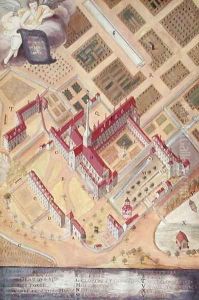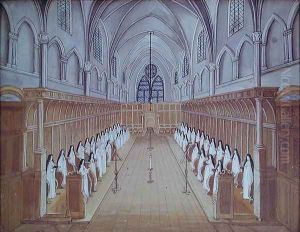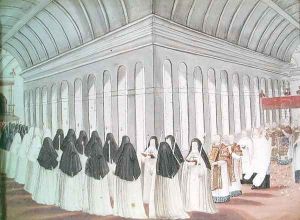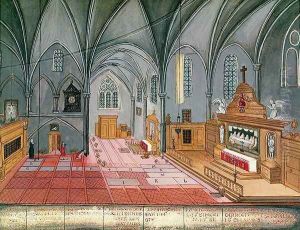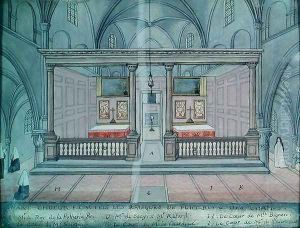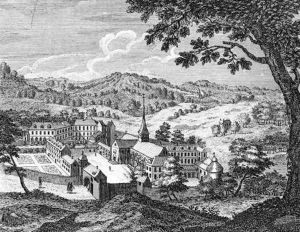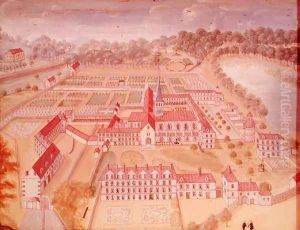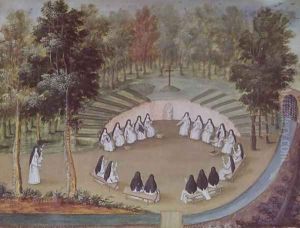Cochin, Louise Madelaine Paintings
Louise Madeleine Cochin was a prominent French engraver and artist, born in 1715 into a family with a strong artistic background. Her father, Charles-Nicolas Cochin the Elder, was a notable engraver, while her brother, Charles-Nicolas Cochin the Younger, gained fame as an artist and writer on art. This familial environment imbued Louise with a profound appreciation for the arts from a young age, fostering her development as an artist in her own right. Despite the challenges faced by women in the art world during the 18th century, Cochin managed to carve a niche for herself, primarily through her skill in engraving.
Cochin's work was well-regarded in her time, characterized by its delicate detail and precision. She contributed to the artistic scene not only through her original creations but also by engraving the works of others, thus helping to disseminate the styles and ideas of the French Rococo movement. Her engravings often depicted scenes from popular stories of the time, religious themes, and occasionally, portraits. Through her work, Louise Madeleine Cochin played a role in the broader cultural exchange of the Enlightenment, when art and ideas circulated widely across Europe.
Despite the recognition she received during her lifetime, Louise Madeleine Cochin's contributions have been somewhat overshadowed by those of her more famous brother. Historical records specific to her life and work are scarce, leading to a situation where her contributions are not as well known or celebrated as those of her male contemporaries. Nonetheless, Cochin's work remains an important part of the fabric of 18th-century French art, offering insights into the era's aesthetic sensibilities and the role of women artists within it.
Louise Madeleine Cochin passed away in 1804, leaving behind a legacy that, while not as prominent as some of her contemporaries, is significant for its demonstration of the capabilities and achievements of women in the arts during a time when their participation was significantly restricted by societal norms. Today, her engravings continue to be studied by art historians and enthusiasts who seek to understand the full spectrum of French Rococo art and the contributions of women artists in the 18th century.
